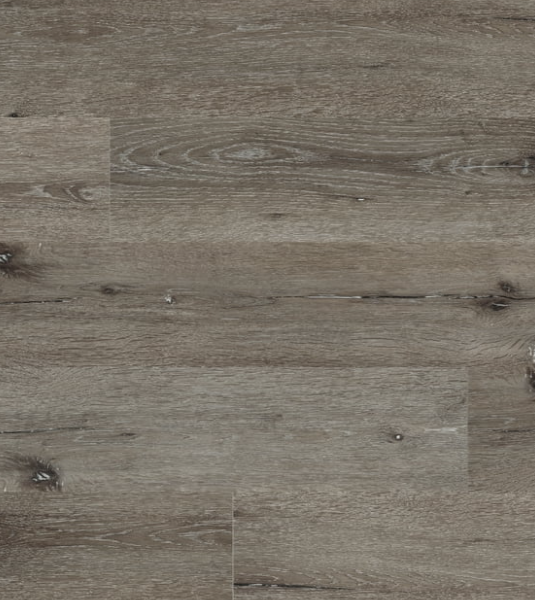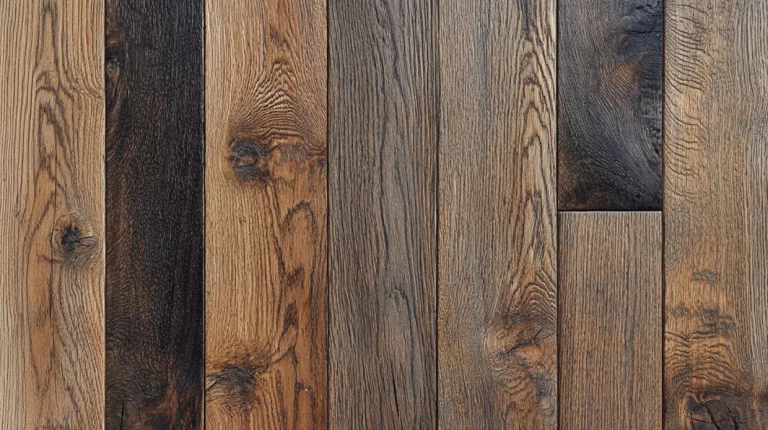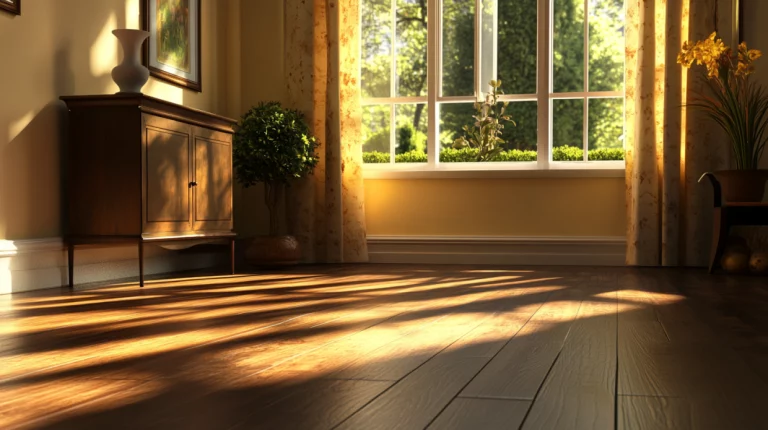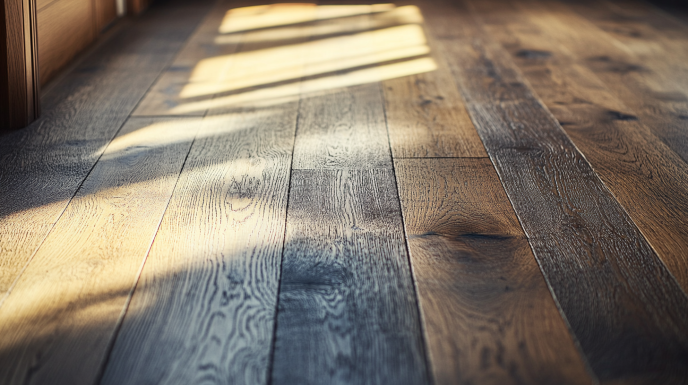
Aldhurst Carbon Earth 7×42 Waterproof Rigid Core LVT Flooring 12.6 Sq. ft.
- 4.4 mm thickness x 7 in. width x 42 in. length, wear layer thickness is 6 mil
- Attached acoustic pad
- Appropriate grade for installation: Above grade, On grade, or Below grade
- Can be installed over most existing surfaces including tile, wood, concrete, and vinyl
- Glossy finish with a low sheen and slight variation in tone
- Residential and commercial use.
Blending Sustainability with Timeless Elegance in Contemporary Interiors
In an era where conscious consumption meets aesthetic sophistication, Aldhurst Carbon Earth has emerged as the definitive material innovation transforming how we conceptualize interior design. Far more than just another trendy finish or passing fad, this remarkable material represents a paradigm shift in how we approach home décor, offering a unique blend of sustainability, durability, and visual impact that few competitors can match. As someone who’s spent countless hours exploring design studios, furniture showrooms, and trade shows over the past decade, I can confidently say that Aldhurst Carbon Earth stands apart in a crowded marketplace of materials vying for consumer attention.
What exactly makes this material so special? Why has it captured the imagination of designers and homeowners alike? And how can you incorporate it into your own living space to create environments that feel both contemporary and timeless? Throughout this comprehensive exploration, we’ll dive deep into everything you need to know about this revolutionary material—from its origins and production methods to practical maintenance tips and styling recommendations.
What Exactly Is Aldhurst Carbon Earth?
At its core, Aldhurst Carbon Earth is a sophisticated composite material that combines recycled carbon compounds with natural earth pigments to create a distinctive finish with remarkable properties. Unlike conventional materials that often sacrifice either form or function, Aldhurst Carbon Earth delivers on both fronts. The development process involves a proprietary blend of post-industrial carbon waste (primarily from manufacturing byproducts) with natural clay compounds and mineral-based stabilizers.
The result is a material that displays a captivating visual depth—characterized by subtle variations in tone and a gentle textural quality that catches light in unexpected ways. When you encounter Aldhurst Carbon Earth for the first time, you’re likely to notice its distinctive matte finish that somehow manages to look simultaneously modern and organic. It’s this contradictory quality—the marriage of industrial precision with natural warmth—that makes it such a versatile choice for contemporary interiors.
What’s particularly fascinating about this material is how it can adopt different personalities depending on application and context. Applied to a sleek coffee table, it reads as sophisticated and contemporary. Used as wall panels in a country home, it evokes a refined rusticity that feels grounded and authentic.
The Origin Story: How Aldhurst Carbon Earth Came to Be
The development of Aldhurst Carbon Earth represents an interesting chapter in sustainable design. Its creation is credited to materials scientist Dr. Helena Moreau and industrial designer Thomas Aldhurst, who began collaborating in 2017 with the explicit goal of creating a finish that offered exceptional aesthetic qualities while maintaining rigorous environmental standards.
The pair spent nearly three years perfecting the formula, working through countless iterations before achieving the perfect balance of durability, visual appeal, and environmental credentials. Their breakthrough came when they discovered that introducing a specific percentage of reclaimed carbon particles into their earth-based mixture created not only structural benefits but also produced the distinctive visual character that has become the material’s calling card.
Production officially began in 2020, with the first Aldhurst Carbon Earth products hitting select design stores and boutiques in early 2021. Since then, its popularity has grown exponentially, transitioning from niche designer material to mainstream design staple in a remarkably short timeframe.
The Versatility Factor: Where Can You Find Aldhurst Carbon Earth?
One of the most compelling aspects of Aldhurst Carbon Earth is its remarkable versatility. This isn’t a material confined to a single application or product category—it has successfully crossed boundaries to appear in virtually every room of the contemporary home.
Furniture Applications
In furniture design, Aldhurst Carbon Earth has made perhaps its most significant impact. The material works beautifully on:
- Dining tables, where its scratch-resistant properties make it particularly practical
- Coffee and side tables, offering a sophisticated focal point in living spaces
- Credenzas and sideboards, where the material’s subtle variations create visual interest
- Bed frames and headboards, bringing textural depth to bedroom settings
- Office furnishings, including desks and shelving units
The material is especially popular in dining furniture, where its durability means it can withstand the rigors of daily use while maintaining its distinctive appearance. Many leading furniture designers have embraced Aldhurst Carbon Earth for statement pieces that combine sculptural forms with the material’s inherent visual qualities.
Flooring Options
Perhaps surprisingly, Aldhurst Carbon Earth has established a strong presence in the flooring sector. Available in both tile and engineered plank formats, Aldhurst Carbon Earth flooring offers an attractive alternative to traditional options like hardwood, laminate, or conventional tile.
What makes it particularly suitable for flooring applications is its remarkable durability coupled with a naturally slip-resistant surface texture. Homeowners appreciate that Aldhurst Carbon Earth flooring develops a subtle patina over time rather than showing obvious wear patterns—it essentially improves with age, similar to how fine leather develops character.
Wall Treatments and Architectural Elements
Beyond furniture and flooring, Aldhurst Carbon Earth has found application as a distinctive wall treatment. Available in panel systems, tiles, and even specialized plaster finishes, it creates statement walls that offer both visual interest and tactile appeal.
Architectural elements like fireplace surrounds, built-in shelving units, and decorative columns have all benefited from Aldhurst Carbon Earth treatments. The material’s ability to be molded and shaped in various ways makes it particularly suitable for custom architectural details that require both durability and aesthetic appeal.
Decorative Accessories
The Aldhurst Carbon Earth aesthetic has extended into smaller home accessories as well. Look for:
- Decorative vessels and vases
- Table lamps and lighting fixtures
- Picture frames and wall art
- Serving boards and tableware
- Decorative boxes and storage solutions
These smaller items offer an accessible entry point for those curious about the material but not yet ready for larger investments like furniture or flooring.
Aesthetic Characteristics: The Visual and Tactile Experience
What makes Aldhurst Carbon Earth immediately recognizable is its distinctive visual signature—a complex interplay of depth, texture, and subtle color variation that defies easy categorization. The material presents a sophisticated dark gray base tone that reveals subtle undertones when viewed under different lighting conditions. Depending on application and finish, these undertones can range from cool blue-grays to warmer brownish notes.
The visual depth comes from the unique way carbon particles are distributed throughout the material, creating minute variations that catch and reflect light differently across the surface. This characteristic gives Aldhurst Carbon Earth a visual complexity lacking in more uniform finishes, making each piece slightly unique.
From a tactile perspective, the standard Aldhurst Carbon Earth finish offers a satisfying textural quality—not rough or abrasive, but with just enough texture to provide a sensory experience beyond the purely visual. The surface typically has a matte appearance that absorbs rather than reflects light, contributing to its sophisticated, understated presence.
Modern or Rustic? The Stylistic Flexibility of Aldhurst Carbon Earth
One of the most interesting aspects of Aldhurst Carbon Earth is how it straddles the line between contemporary and traditional design languages. This chameleon-like quality makes it exceptionally versatile for various interior styles.
In modern, minimalist spaces, Aldhurst Carbon Earth reads as sleek and sophisticated. Its subtle texture and depth prevent it from appearing flat or lifeless—a common complaint with many minimalist materials. When paired with glass, chrome, or polished concrete, it provides a grounding element that balances these more reflective surfaces.
Conversely, in more traditional or rustic settings, Aldhurst Carbon Earth contributes an earthy authenticity without veering into heavy-handed rusticity. When combined with natural woods, textiles, and organic forms, it enhances the overall warmth while maintaining a certain refinement.
This stylistic flexibility explains why the material has been embraced by designers across the spectrum—from those creating ultra-contemporary urban lofts to others working on updated farmhouse interiors or eclectic bohemian spaces.
Color Compatibility: Creating Cohesive Design Schemes
Due to its relatively neutral base tone, Aldhurst Carbon Earth plays well with a wide spectrum of color palettes. However, certain combinations tend to particularly showcase its unique qualities:
Rich Jewel Tones
Deep emerald greens, sapphire blues, and ruby reds create dramatic contrast against the muted darkness of Aldhurst Carbon Earth. This combination creates a luxurious, sophisticated atmosphere ideal for dining rooms, libraries, or formal living spaces.
Warm Neutrals
Beiges, taupes, and warm whites soften the potentially industrial edge of Aldhurst Carbon Earth, creating balanced, livable spaces. This pairing works particularly well in bedrooms and family rooms where comfort is paramount.
Organic Accents
Natural materials like terracotta, olive green, and earthy ochres enhance the organic qualities inherent in Aldhurst Carbon Earth. This palette creates spaces that feel connected to nature while maintaining contemporary sophistication.
Monochromatic Gray Schemes
Various shades of gray—from pale silver to charcoal—create sophisticated, cohesive spaces where Aldhurst Carbon Earth provides textural interest within a controlled color story.
The Practical Benefits: Durability and Performance
Beyond its aesthetic appeal, Aldhurst Carbon Earth offers impressive performance credentials that make it genuinely practical for everyday living.
Exceptional Durability
The composite structure of Aldhurst Carbon Earth creates a remarkably durable surface. When properly sealed (which happens during manufacturing for most commercial products), it resists:
- Scratches and abrasions from daily use
- Water damage and moisture penetration
- Heat marks from hot dishes or cookware (though extreme heat should still be avoided)
- Most household stains, including food, beverages, and cosmetics
This durability makes it particularly suitable for high-traffic areas and surfaces that see frequent use, such as dining tables, kitchen countertops, and flooring.
Maintenance and Care
One of the most appealing aspects of Aldhurst Carbon Earth is its low-maintenance nature. For regular cleaning, a simple wipe with a damp cloth is typically sufficient to remove dust and light soil. For more thorough cleaning, a mild pH-neutral cleaner is recommended.
Unlike natural stone, Aldhurst Carbon Earth doesn’t require periodic resealing, though manufacturers typically recommend applying a refresher coat of protective finish every 3-5 years for pieces that see heavy use. This maintenance regimen is considerably simpler than many alternative materials.
For specific care instructions, it’s always best to follow the manufacturer’s recommendations, as different applications may have slightly different finishing treatments that affect care requirements.
The Environmental Story: Sustainability Credentials
In an era of increasing environmental consciousness, Aldhurst Carbon Earth stands out for its impressive sustainability profile. The material’s core environmental benefits include:
Recycled Content
Depending on the specific formulation, Aldhurst Carbon Earth typically contains between 40-60% recycled content. This includes reclaimed carbon compounds from industrial processes and, in some cases, recycled glass particles that enhance the material’s structural integrity.
Low-VOC Formulation
Unlike many synthetic materials that off-gas volatile organic compounds (VOCs), properly manufactured Aldhurst Carbon Earth products are formulated to minimize VOC emissions, contributing to healthier indoor air quality.
Durability and Longevity
Perhaps the most significant environmental benefit is simply the material’s longevity. By creating products that last for decades rather than years, Aldhurst Carbon Earth reduces the consumption cycle and keeps items out of landfills longer.
End-of-Life Considerations
When an Aldhurst Carbon Earth product eventually reaches the end of its useful life, the material can be processed for recycling rather than sent to landfill. The manufacturer has established a take-back program for commercial installations, though residential recycling options currently remain more limited.
Where to Purchase: Finding Aldhurst Carbon Earth Products
As demand has grown, Aldhurst Carbon Earth products have become increasingly accessible through various retail channels:
Specialty Design Retailers
High-end furniture and design stores in major metropolitan areas were among the first to carry Aldhurst Carbon Earth products, and they continue to offer some of the most distinctive pieces. Stores like Design Within Reach, Luminaire, and similar design-focused retailers typically stock a curated selection.
Direct-to-Consumer Brands
Several online furniture brands have embraced Aldhurst Carbon Earth, making it more accessible to consumers outside major design centers. Companies like Article, Interior Define, and Floyd have incorporated the material into select pieces in their collections.
Custom Fabricators
For those seeking bespoke applications, a growing network of fabricators specializes in custom Aldhurst Carbon Earth work. These specialist companies can create everything from custom furniture to architectural elements tailored to specific project requirements.
Big Box Home Retailers
As the material has gained mainstream acceptance, even larger retailers like Crate & Barrel, West Elm, and CB2 have begun introducing select Aldhurst Carbon Earth pieces into their collections, typically as higher-end offerings within their product lines.
Price Considerations: What to Expect
As with most distinctive materials, Aldhurst Carbon Earth typically commands a premium price point compared to more conventional alternatives. However, the price range varies significantly depending on application, size, and manufacturer.
For furniture, small Aldhurst Carbon Earth accent tables typically start around $400-600, with larger dining tables ranging from $1,800 to $5,000+ depending on size and design complexity. Flooring applications generally run $15-25 per square foot installed, positioning it as a premium option comparable to high-end natural stone or hardwood.
While the upfront investment may be higher than some alternatives, many owners find the combination of aesthetic appeal, durability, and low maintenance requirements justifies the premium. As one interior designer put it, “It’s an investment that ages beautifully—both aesthetically and financially—because you won’t be replacing it every few years like other trendy materials.”
Real-World Applications: Where Aldhurst Carbon Earth Truly Shines
While Aldhurst Carbon Earth can work in virtually any room, certain applications particularly showcase its unique qualities:
Dining Spaces
The material’s durability makes it ideal for dining tables, where it stands up to daily use while maintaining its distinctive appearance. An Aldhurst Carbon Earth dining table paired with warm wood chairs creates a compelling focal point that balances warmth and sophistication.
Living Room Focal Points
Coffee tables and media consoles in Aldhurst Carbon Earth create anchoring elements in living spaces, providing visual weight that balances lighter upholstered pieces. The material’s subtle variation adds visual interest without competing with other design elements.
Kitchen Accents
While not typically used for primary countertops (though this application is technically possible), Aldhurst Carbon Earth makes striking kitchen islands, backsplashes, or integrated sink units that introduce textural contrast in culinary spaces.
Bathroom Applications
The material’s water-resistant properties make it suitable for bathroom vanities, shower surrounds, and even integrated sink basins. In these wet environments, its non-porous nature provides practical benefits while its visual depth adds sophistication.
Small Space Solutions
In compact living environments, Aldhurst Carbon Earth’s visual depth and texture add interest without overwhelming limited square footage. Its relatively neutral coloration prevents it from visually dominating small rooms while still providing character.
Customization Possibilities: Making It Your Own
One of the advantages of Aldhurst Carbon Earth is the degree to which it can be customized to suit specific project requirements:
Finish Variations
While the standard Aldhurst Carbon Earth finish features a matte texture, variations include:
- Honed: A smoother, more refined surface with subtle sheen
- Brushed: Enhanced texture that emphasizes the material’s tactile qualities
- Polished: A higher-gloss option that intensifies color depth (though less common)
Color Modifications
The standard Aldhurst Carbon Earth tone centers around a sophisticated carbon gray, but the manufacturing process allows for subtle tinting that can push the material toward warmer or cooler undertones without losing its essential character.
Edge Profiles and Details
For furniture and countertop applications, various edge profiles can dramatically change the material’s appearance—from razor-sharp modern edges to softly beveled profiles that emphasize the material’s depth.
Inlays and Combinations
Advanced fabrication techniques allow Aldhurst Carbon Earth to be combined with other materials like brass, copper, or exotic woods, creating distinctive inlay patterns or mixed-material compositions.
Expert Reviews: What the Design Community Says
The reception of Aldhurst Carbon Earth among design professionals has been overwhelmingly positive, with several notable industry voices weighing in:
Interior designer Rebecca Atwood notes: “What’s remarkable about Aldhurst Carbon Earth is how it manages to be both a statement and a neutral simultaneously. It has enough visual interest to stand alone but plays well with other design elements without competing for attention.”
Furniture designer Sean Woolsey observes: “From a fabrication perspective, it’s a dream material—stable, consistent, and capable of taking different finishes. But what really sets it apart is how it develops character over time. Unlike materials that simply wear out, Aldhurst Carbon Earth improves with age.”
Sustainability consultant Maya Rivera highlights: “Beyond the obvious aesthetic appeal, the environmental story behind Aldhurst Carbon Earth is compelling. It represents a meaningful effort to repurpose industrial carbon waste into a long-lasting, beautiful product. That’s the kind of circular thinking we need more of in the design industry.”
Comparison with Alternative Materials
To truly understand Aldhurst Carbon Earth’s position in the market, it’s helpful to compare it with materials that might serve similar functions:
Concrete
Like Aldhurst Carbon Earth, concrete offers a contemporary aesthetic with textural interest. However, concrete is significantly heavier, more prone to cracking, and typically requires more maintenance to prevent staining. Aldhurst Carbon Earth provides a similar visual language with superior practical performance.
Natural Stone
While marble, slate, and other stones offer natural variation and texture, they typically require more maintenance (regular sealing) and are more susceptible to etching, staining, and chipping. Aldhurst Carbon Earth delivers similar visual depth with enhanced durability.
Engineered Surfaces
Quartz and other engineered surfaces offer excellent durability but often lack the visual depth and character of Aldhurst Carbon Earth. They typically present a more uniform appearance that can feel somewhat artificial in comparison.
Metal Finishes
Blackened steel and other dark metal finishes share some aesthetic qualities with Aldhurst Carbon Earth but are typically more reflective and industrial in character. They also tend to show fingerprints more readily and may develop uneven patina over time.
The Future of Aldhurst Carbon Earth
As the material continues to gain popularity, several interesting developments appear on the horizon:
Expanded Color Range
While the signature carbon gray tone remains the most recognizable version, manufacturers are exploring an expanded palette that maintains the material’s essential character while offering greater design flexibility.
Exterior Applications
Current formulations are primarily intended for interior use, but research is underway to develop outdoor-rated versions that could extend the aesthetic to exterior applications like facades, outdoor furniture, and landscape features.
Advanced Fabrication Techniques
3D printing and other advanced manufacturing methods are being explored to create more complex forms and structures with Aldhurst Carbon Earth material, potentially opening new design possibilities.
Accessibility Initiatives
As production scales up, manufacturers are working to introduce more accessible price points that would bring Aldhurst Carbon Earth products to a broader market segment beyond luxury and high-end design.
Conclusion: Why Aldhurst Carbon Earth Matters
In the constantly evolving world of interior design, truly revolutionary materials are rare. Most “innovations” represent incremental improvements or surface-level trends rather than fundamental shifts in how we think about our living environments.
Aldhurst Carbon Earth stands apart because it successfully marries seeming contradictions—industrial and organic, contemporary and timeless, sophisticated and practical. It represents not just a new aesthetic but a new philosophy about how our surroundings can balance visual appeal with environmental responsibility and practical performance.
For those considering incorporating this material into their homes or projects, the initial investment may be higher than more conventional options. However, the combination of distinctive appearance, exceptional durability, and environmental credentials makes a compelling case for Aldhurst Carbon Earth as not just a design choice but an investment in living well.
Whether you’re drawn to its sophisticated appearance, impressed by its practical benefits, or aligned with its sustainability story, Aldhurst Carbon Earth offers something genuinely distinctive in today’s design landscape. As we collectively move toward more thoughtful, sustainable consumption patterns, materials like this—beautiful, durable, and responsibly produced—point the way toward a more considered approach to creating our living environments.



